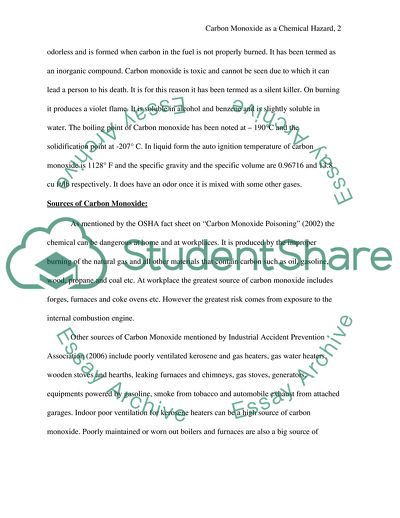Cite this document
(Carbon Monoxide as a Chemical Hazard in the Workplace Coursework, n.d.)
Carbon Monoxide as a Chemical Hazard in the Workplace Coursework. https://studentshare.org/chemistry/1706187-carbon-monoxide-as-a-chemical-hazard-in-the-workplace
Carbon Monoxide as a Chemical Hazard in the Workplace Coursework. https://studentshare.org/chemistry/1706187-carbon-monoxide-as-a-chemical-hazard-in-the-workplace
(Carbon Monoxide As a Chemical Hazard in the Workplace Coursework)
Carbon Monoxide As a Chemical Hazard in the Workplace Coursework. https://studentshare.org/chemistry/1706187-carbon-monoxide-as-a-chemical-hazard-in-the-workplace.
Carbon Monoxide As a Chemical Hazard in the Workplace Coursework. https://studentshare.org/chemistry/1706187-carbon-monoxide-as-a-chemical-hazard-in-the-workplace.
“Carbon Monoxide As a Chemical Hazard in the Workplace Coursework”. https://studentshare.org/chemistry/1706187-carbon-monoxide-as-a-chemical-hazard-in-the-workplace.


